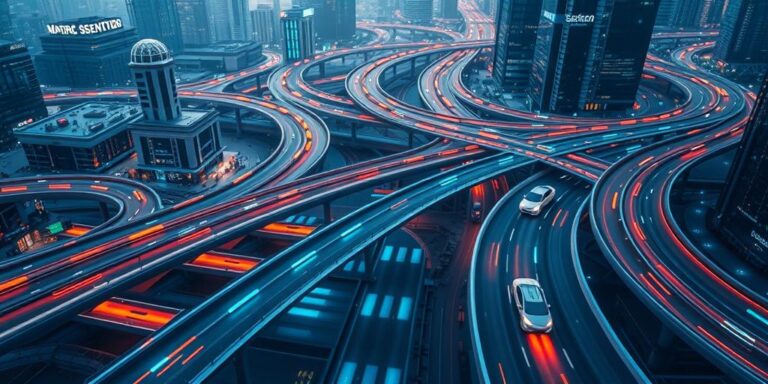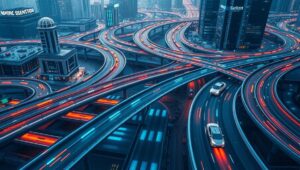Intelligent Transportation Systems with IoT: Reducing Congestion (2026)
Traffic congestion remains a significant challenge in urban areas worldwide, leading to lost productivity, increased fuel consumption, and environmental pollution. Intelligent Transportation Systems (ITS), enhanced by the Internet of Things (IoT), offer promising solutions to mitigate these problems. This article explores how ITS with IoT is evolving to reduce congestion and improve traffic flow in 2026.
Understanding Intelligent Transportation Systems (ITS)
ITS refers to the application of advanced technologies to manage and improve transportation systems. These systems integrate various components, including sensors, communication networks, data analytics, and control systems, to optimize traffic flow, enhance safety, and reduce environmental impact.
The Role of IoT in ITS
The Internet of Things (IoT) plays a crucial role in modern ITS by providing real-time data collection and communication capabilities. IoT devices, such as sensors embedded in roads, connected vehicles, and traffic cameras, generate vast amounts of data that can be analyzed to make informed decisions and optimize traffic management strategies.
Key Components of ITS with IoT
-
Connected Vehicles: Vehicles equipped with sensors and communication devices can exchange information with each other and the infrastructure, enabling cooperative driving and real-time traffic updates.
-
Smart Traffic Lights: Adaptive traffic signal control systems use real-time data to adjust signal timings based on traffic conditions, reducing congestion and improving traffic flow.
-
Roadside Sensors: Sensors embedded in roads collect data on traffic volume, speed, and vehicle types, providing valuable insights for traffic management.
-
Traffic Cameras: High-resolution cameras monitor traffic conditions and identify incidents such as accidents or road closures, enabling rapid response and traffic rerouting.
-
Data Analytics Platforms: Advanced data analytics platforms process and analyze data from various sources to identify patterns, predict traffic conditions, and optimize traffic management strategies.
Strategies for Reducing Congestion in 2026
-
Real-Time Traffic Management: ITS with IoT enables real-time traffic management by providing up-to-date information on traffic conditions, allowing traffic operators to make informed decisions and implement appropriate measures.
-
Adaptive Traffic Signal Control: Smart traffic lights adjust signal timings dynamically based on real-time traffic conditions, reducing congestion and improving traffic flow.
-
Incident Management: Rapid detection and response to incidents such as accidents or road closures minimize disruption and reduce congestion.
-
Predictive Traffic Modeling: Advanced data analytics techniques forecast traffic conditions, allowing proactive traffic management strategies to be implemented.
-
Dynamic Routing: Navigation systems provide real-time traffic updates and suggest alternative routes to drivers, helping them avoid congested areas.
Benefits of ITS with IoT
- Reduced traffic congestion and travel times
- Improved traffic flow and efficiency
- Enhanced safety and reduced accidents
- Lower fuel consumption and emissions
- Better air quality and environmental sustainability
Challenges and Considerations
- Data Security and Privacy: Protecting sensitive data collected by IoT devices is crucial to maintain public trust and prevent misuse.
- Interoperability: Ensuring seamless communication and data exchange between different systems and devices is essential for effective ITS implementation.
- Infrastructure Investment: Building and maintaining the necessary infrastructure, including sensors, communication networks, and data centers, requires significant investment.
- Regulatory Framework: Establishing clear regulatory guidelines and standards is necessary to ensure the responsible and ethical use of ITS technologies.
Conclusion
Intelligent Transportation Systems with IoT hold great promise for reducing traffic congestion and improving traffic flow in urban areas. By leveraging real-time data, advanced analytics, and smart technologies, ITS can optimize traffic management strategies, enhance safety, and promote environmental sustainability. As we move towards 2026, continued investment and innovation in ITS with IoT will be essential to create more efficient, sustainable, and livable cities.




